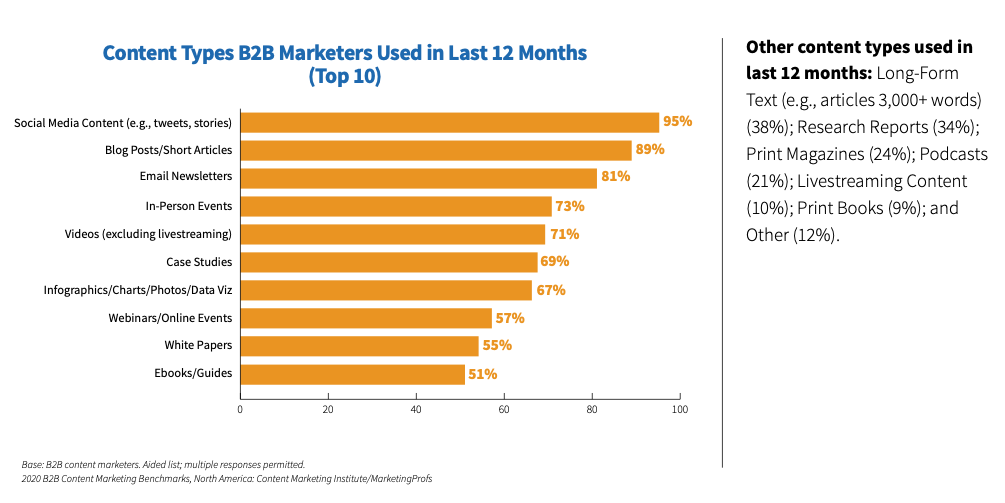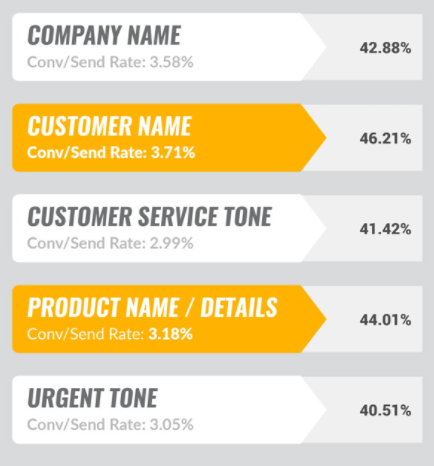There are many ways to reach a customer these days. Between social media, display ads and direct email newsletters, the possibilities are near endless. And also overwhelming. How do you choose which marketing channel to focus on?
Marketing email newsletters have been around for decades. While it was a novelty at first to receive these emails, our inboxes are now overflowing with them. Trying to discern what’s necessary and what’s junk is a challenge. Marketers who work with email are constantly trying to make sure theirs is the one you open.
From a brand perspective, we’ll explore what makes up an email newsletter, the pros and cons of having one and how to fill it with engaging content.
What is an email newsletter?
An email newsletter is a digital communication sent from a company to its list of subscribers. A newsletter software and template are often used and they are usually sent on a set schedule.
Companies use email newsletters for a variety of reasons:
- Announce sales and discounts
- Inform on company news and updates
- Summarize published stories and content
- Convert customers to a paid tier or subscription
- Nurture leads
- Retain current customers

In a 2020 study, 81% of B2B marketers used email newsletters for content marketing in the last 12 months. The same study also found that 87% of B2B marketers identify email as one of their top free organic distribution channels.
In one survey on email marketing success, the ROI average was a $42 return on every dollar the brand invests into email marketing. This is by far the highest of any marketing channel available.
Advantages & disadvantages of email newsletters for marketing
Multichannel marketing is a strategy that incorporates multiple channels and platforms with individualized messaging. Email marketing is just one of those channels you might use in a multichannel approach. As with any marketing channel, there are pros and cons for using it.
Advantages of newsletters for marketing
- Saves money: As far as investment goes, there is a wide variety of email software available, ranging from free to pretty expensive. As mentioned earlier, the ROI surpasses any marketing channel you might use, which means you’re saving money already in the long run.
- Connects you to your customers: 59% of customers say that marketing emails influence their purchase decisions and 50.7% of them will purchase from them at least once a month. Email newsletters keep you in direct contact with current customers and reach new ones.
- Measurable performance: For every email newsletter you send, statistics are generated. Depending on the tools you use, you can see how each send performed or get metrics per subscriber. With open rates and click rates easily available, you can benchmark your own performance against your industry’s average.
- Drives traffic: Email newsletters are essentially another way to distribute existing content. If you’re a publisher, having top stories sent out will drive traffic to your site. If you’re a B2C company, announcing sales drive customers to shop on your site.
Disadvantages
- Takes time to learn and create: Every new marketing channel has a learning curve. It’ll take time for you to research software, plan content and design an issue.
- Can get lost in the noise: With so many email newsletters being sent out these days, it’s very easy for yours to be ignored or straight-up deleted.
6 Necessary components of an email newsletter
Business newsletters vary in design and type but some things won’t change. The following are some basic components of an email newsletter. Oftentimes, you will find yourself testing each component to see what changes generate the most success.
1. Subject line
The very first thing on a newsletter that someone reads is the subject line. It’s a vital component of your marketing messaging because 47% of email recipients use it to decide if they want to open your email or not. If that doesn’t convince you, then note that 69% will report you for spam based only on the subject line.

Subject lines are a copywriting art form and there are quite a few different ways to write them. Personalization by using the customer’s name has a 46.21% open rate while naming a product has a 44.01% open rate. Beyond the actual words of the subject line, you’ll also need to consider the length. Different devices and email programs have their own character limit.
2. Times to send
Just like in social media, email newsletters have their own optimal send days and times. Similar to best times to post on social, there also isn’t just one single answer for when to send them since days and times change by industry and company. In one study, it was found that 21.49% of all email opens occur within the first hour. It’ll take experimentation to figure out when is best for your customer base and industry.
3. Content
You can’t have an email newsletter without content. And, having a history of great, engaging newsletter content only encourages your subscribers to open more often. But what should you put into it? You don’t need to start fresh and rush to create a lot of new material – you can repurpose your existing content to maximize its distribution.

Here’s a variety of topics to get you started:
- Sales and discounts
- Round-up of popular or recent blog posts like the Resy example above
- Recently published videos
- New case studies or product launches
- Membership/customer deals and promotions
- Industry news
- Customer testimonials
- Behind-the-scenes at your company
- New job openings at your company
- Product education
- FAQs and their answers
- Upcoming webinars, or recordings of past webinars
4. Templates & designs

An appealing, on-brand design for a newsletter helps it stand out and get attention. But no marketer wants to start a newsletter design from scratch with every new send. The solution? Templates. These may often change as the type changes. For example, you might have one template for announcing a new product while you have another for sharing story links. Templates make your life easier.
5. Call-to-action or links

In every newsletter, a call-to-action button or link is essential for actually getting conversions out of your efforts. The CTA is tied to your current issue’s goal and often links to your website. If your goal is to more widely publicize your blog posts, then you’ll have CTAs for each post. If your goal is to share about a new product, then your CTA will be like the example above, encouraging customers to try it out.
Another important link to incorporate in your email newsletter is the unsubscribe link. You don’t want people to unsubscribe but you also don’t want them to mark you as spam if there’s no way to unsubscribe. A simple unsubscribe feature builds trust with your audience and can make it easier to get back into their inboxes at a later time.
6. Sign-up forms
How do you get subscribers if they don’t know that you’re sending emails? Email newsletter signup forms are often embedded in websites, promoted on social posts or profiles and also pop up when you visit a new site.

For example, Sprout’s form is positioned on the right rail of articles. If you’ve enjoyed reading this article so far, you can go ahead and sign up for Sprout’s newsletter for additional marketing tips and resources. See how natural that signup form looked?
How to create engaging newsletters
So now that you understand the importance of email newsletters and what components are necessary, it’s time to consider how to make them as engaging as possible. Remember that one company’s engagement strategy might not work for you.
Here are a few tips to consider:
Be on brand

Going hand in hand with design, you want your newsletters to be just as on-brand as you are on every other marketing channel. This means consistent fonts, colors, logos and yes, voice. If you’re going text-heavy, then adhering to your brand voice is important.
A/B test as much as possible
You don’t know what customers like unless you’ve tested them. Do they like short subject lines? Does using their names increase the open rate? Do videos get more click-throughs than buttons? Newsletter tools and software offer many ways to A/B test your emails.
Mobile friendly

Of the number of emails that are opened, 81% are on mobile, a number that has drastically increased from 27% in 2011. It goes to say that you need to optimize for mobile devices. If they aren’t optimized, then 80% of recipients will delete the email immediately.
Segment your audiences
Have you ever received an email that was absolutely off-topic for you? Or maybe one from a company that knew exactly which product type you’re interested in? When you segment your audiences, you are able to deliver more focused content to people who want it the most. One company found that segmented campaigns produced 30% more opens and 50% more clickthroughs.
Set newsletter goals
Why are you even sending an email newsletter? It can’t be because you read that you needed to. Set goals for your newsletter channel, per issue and the goals’ corresponding metrics. If you need a place to start from, research your own industry’s benchmarks on open rates and CTRs.
Time to get started
Email newsletters are a strong tool in any marketer’s toolkit. It can be used for content marketing, sales nurturing and customer conversions. While it can be tough to stand out from the noise, having the necessary newsletter components and testing them out will help you narrow in on what’s best for your company.
Ready to get started on email newsletters? Take a look at these free email marketing tools to help you take that first step.
The post How to effectively use email newsletters for marketing appeared first on Sprout Social.